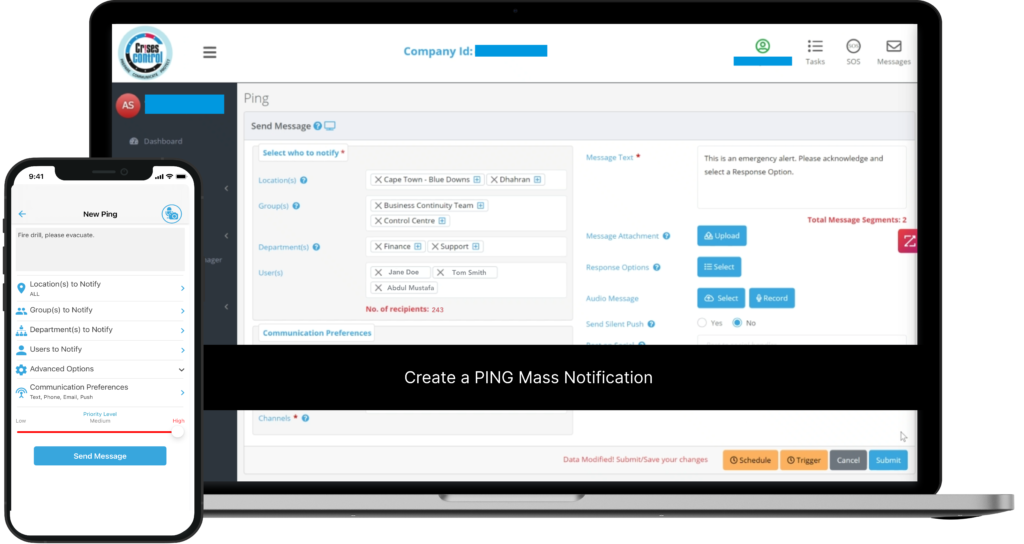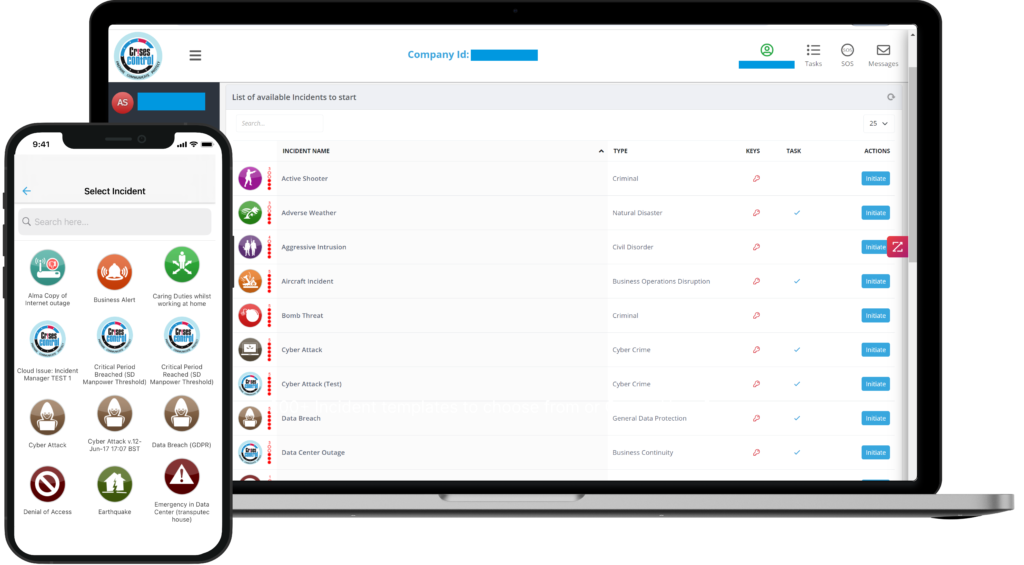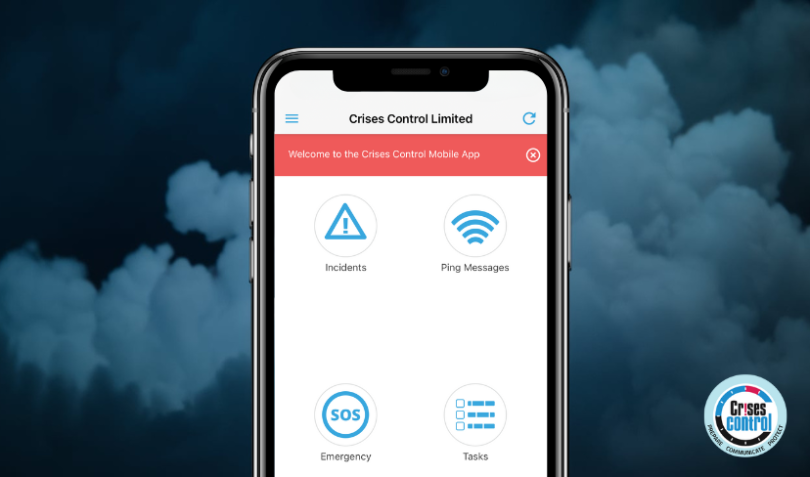Written by Shalen Sehgal | CEO
Why Mass Communication Matters in Crisis Management
In a world where crises can occur at any moment—whether a natural disaster, a cyber-attack, or a public health emergency—effective communication is the backbone of any response strategy. For managers tasked with crisis management, the ability to reach employees, stakeholders, and the public quickly and reliably is critical. But not all communication methods are created equal. Traditional channels like call trees and emails may seem adequate at first glance, but they often fall short in speed, reach, and reliability during a crisis.
This blog delves into the limitations of these traditional methods and explores how modern Mass Communication Systems offer faster, more reliable, and more comprehensive solutions. We’ll also highlight how Crises Control can elevate your crisis communication strategy, ensuring your organisation is prepared for any emergency.
The Limitations of Traditional Communication Channels
Traditional communication methods—call trees, emails, and manual alerts—are long-standing tools in crisis management. While they are familiar and low-cost, their effectiveness is limited by several key factors:
Speed
Traditional methods are inherently slow. call trees rely on a cascading series of calls, where each person must contact the next. This creates delays that can be fatal in time-sensitive situations. Similarly, emails often sit unread for minutes or even hours, particularly if employees are away from their computers or in areas with limited internet access.
Reach
Call trees and emails depend on accurate and current contact information, which can be challenging to maintain, especially for organisations with remote or dispersed teams. If a single piece of information is outdated, the entire communication chain can break down, leaving parts of the organisation in the dark.
Reliability
Human error is an ever-present risk. A single missed call, a wrong email address, or an out-of-date contact list can result in critical delays or inconsistent messaging. Furthermore, traditional methods provide no way to confirm that recipients have read or understood the message.
Scalability
As organisations grow, their communication needs become more complex. Scaling traditional methods to accommodate hundreds or thousands of contacts can be time-consuming, expensive, and error-prone, often requiring significant manual effort to keep processes running smoothly.
How Mass Communication Systems Revolutionise Crisis Management
Modern Mass Communication Systems address these shortcomings by leveraging technology to automate, streamline, and enhance the communication process. Here’s how they solve the problems associated with traditional methods:
Instant Speed
Unlike traditional channels, Mass Communication Systems send messages simultaneously across multiple platforms—SMS, push notifications, voice calls, emails, and even social media. This ensures everyone receives crucial information in real-time, which can dramatically reduce response times and mitigate damage.
Wide Reach
Mass Communication Systems are built to reach all members of an organisation, regardless of location. Whether employees are at their desks, on the road, or working remotely, they receive the same critical information simultaneously. Features like geo-targeting and multi-language support further enhance reach, ensuring messages are tailored and localised as needed.
High Reliability
Automation significantly reduces the risk of human error, while delivery confirmation features ensure that messages are received and acknowledged. If a recipient doesn’t confirm receipt, the system can automatically escalate the alert, ensuring no message is missed.
Scalability and Cost Efficiency
These systems can scale to meet the needs of organisations of any size without requiring additional infrastructure or manual effort. They also tend to be more cost-effective in the long run, reducing the hidden costs associated with traditional methods, such as time lost in coordination and potential legal liabilities from poor communication.
Interested in our Ping Mass Notification Software?
Efficiently alert everyone in seconds at scale with our Mass Notification System – PING, get the message out fast and ensure rapid response and recovery.

Real-Life Scenarios: Traditional Channels vs. Mass Communication Systems
1. Speed: The Importance of Immediate Alerts
Imagine a chemical spill in a large manufacturing plant. With a call tree system, each person calls the next in a sequence, creating a lag of several minutes before the entire facility is informed. Those minutes can be the difference between a quick evacuation and a full-scale disaster.
With a Mass Communication System like Crises Control’s Ping Mass Notification Module, alerts are sent out instantly to all employees via SMS, push notifications, emails and voice calls. Every worker, regardless of their location, receives the same message at the same time, enabling a swift and organised evacuation. This immediate response can save lives, reduce injuries, and minimise damage.
2. Reach: Ensuring Everyone Gets the Message
Traditional communication methods often fail to reach everyone. In an emergency, phone lines can be overwhelmed, and emails can go unnoticed, especially if staff are working in the field or on mobile devices without constant internet access.
Mass Communication Systems, however, are designed to overcome these limitations by broadcasting messages across multiple channels. For example, Crises Control ensures that messages are sent via SMS, app alerts, and social media, making it much more likely that everyone receives the information they need. Additionally, Crises Control can target specific groups or locations, ensuring that messages are relevant to each recipient.
3. Reliability: Reducing the Risk of Human Error
Human error can compromise communication during a crisis. A mistyped phone number, a wrong email address, or an outdated contact list can delay message delivery, causing confusion and potentially putting lives at risk.
Mass Communication Systems mitigate this risk through automation. Crises Control, for instance, allows organisations to pre-set contact lists and message templates, reducing the need for manual input and the chance of mistakes. The platform’s confirmation tracking feature ensures that managers know exactly who has received and read each message, enabling effective follow-up actions and reducing uncertainty.
4. Cost-Effectiveness and Scalability: Preparing for Growth
While traditional methods may seem cheaper initially, they often come with hidden costs, such as the time spent managing communication processes, the risk of miscommunication, and potential revenue losses due to prolonged disruptions.
Mass Communication Systems offer a more sustainable solution. They are scalable, allowing organisations to add new contacts and expand communication efforts without additional resources. Crises Control’s cloud-based platform, for example, ensures minimal upfront costs and ongoing affordability, providing a flexible solution that grows with the organisation’s needs.
How Crises Control Stands Out
Crises Control offers a robust Mass Communication System that directly addresses the limitations of traditional channels:
- Instant, Multi-Channel Alerts: The platform delivers messages via SMS, push notifications, voice calls, emails, and even social media, ensuring immediate and comprehensive reach.
- Automated Escalation Paths: If a message is not acknowledged, Crises Control automatically escalates the alert, reducing the risk of missed communications.
- Real-Time Tracking and Reporting: Managers can see who has received and acknowledged each message, providing transparency and accountability in the communication process.
- Easy Integration and Customisation: Crises Control integrates seamlessly with existing IT infrastructures, is easy to scale, and allows for message customisation and localisation, ensuring that communications are relevant and easily understood by all recipients.

Interested in our Incident Management Software?
Customise your Crisis Incident Management Software to meet your specific needs with our flexible tools & stay connected and informed during the crisis and incident management process
Overcoming Adoption Barriers
Some organisations may hesitate to adopt a new communication system due to concerns about costs, integration challenges, or employee training. Crises Control addresses these concerns with a user-friendly platform that integrates easily with existing tools and requires minimal training. Additionally, by offering a scalable, cost-effective solution, it ensures that organisations of all sizes can benefit without stretching their budgets.
Conclusion: Modern Solutions for Modern Challenges
Traditional communication methods cannot keep up with the demands of today’s fast-paced and unpredictable crises. Mass Communication Systems like Crises Control provide the speed, reach, reliability, and scalability that organisations need to respond effectively and protect their people and assets.
If you’re ready to upgrade your crisis communication strategy, contact us today to get a free personalised demo and experience the benefits of a modern Mass Communication System.
Request a FREE Demo

